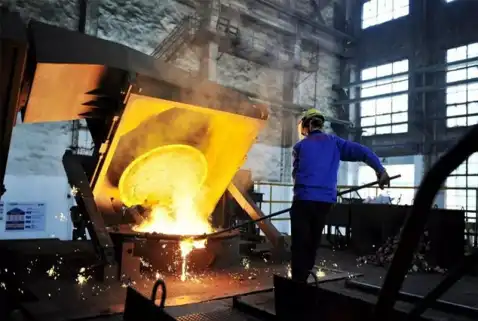
Knowledge
Improving the Metallurgical Quality of Cast Steel (Part Two)

Requirements for Deoxidation of Molten Steel
At present, there is no effective method to prevent secondary oxidation during the steel casting process. Therefore, it is necessary to ensure that the steel liquid is well deoxidized in the furnace. The steel casting factory, on the basis of strictly controlling the reduction operation, requires that the FeO content in the slag before steel tapping be kept below 0.5%. The deoxidation requirements vary with different steelmaking methods.
1. Electric Arc Furnace Steelmaking (Oxidation Method)
After oxidation is completed, add high manganese iron to maintain a manganese content of 0.2% or more for about 10 - 15 minutes.
Before slag removal at the end of oxidation, maintain a clean boil for 10 minutes.
At the initial stage of reduction, add slag-forming materials and deoxidizing powder composed of carbon powder and ferrosilicon powder. Choose calcium carbide or white slag based on the carbon content.
During the reduction period, sprinkle a small amount of ferrosilicon powder and carbon powder on the slag surface each time the furnace door is opened. Tap the steel under white slag conditions. Take a slag sample for analysis before tapping the steel, and the FeO content should be less than 0.5%.
2. Non-oxidation steelmaking (including induction furnace smelting)
After the metal charge is completely melted, the temperature of the molten steel is raised to be equivalent to the tapping temperature. Manganese iron is added first, followed by silicon iron for pre-deoxidation.
During the period when the molten steel is kept in the furnace after pre-deoxidation, reducing agents are often scattered on the slag surface to reduce the FeO content in the slag. The composition of the reducing agents varies for different steel grades. Before tapping, the FeO content in the slag should be lower than 0.5%.
3. Final deoxidation of molten steel
Final deoxidation is generally carried out in the ladle, and the commonly used deoxidizer is aluminum, with the addition amount controlled between 0.08% and 1.2%. Many casting steel plants do not follow standard procedures for final deoxidation. Using silicon and manganese for deoxidation without final deoxidation with aluminum or with a small amount of aluminum will result in the formation of non-metallic inclusions such as silicates. Using silicon and manganese for deoxidation followed by a small amount of aluminum for final deoxidation will form type II inclusions, reducing the toughness and plasticity of the steel. Using silicon and manganese for deoxidation followed by a larger amount of aluminum (about 0.1%) for final deoxidation will form complex sulfides, reducing the performance of the steel.
Vigor has more than 18 years experience on castings. If you have any question and demand of products development or improve your supply chain, please feel free to contact us at info@castings-forging.com



